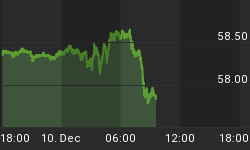I'm not a big fan of the monthly Employment Situation Report. It's a one-week snapshot of payrolls. It has all kinds of estimates (e.g. small business "birth/death" model) built into it. Being that seasonal adjusting is an art, not a science, I am skeptical of the adjusted data. And the revisions are massive. Conversely, I am a big fan of the state unemployment data on an unadjusted basis. Folks who have been laid off have an incentive to get in line and be counted. There are no well-intentioned-but-impossible-to-accomplish assumptions in the unadjusted data. Those who are in line get counted. Moreover, the Conference Board puts initial jobless claims in its index of leading economic indicators whereas nonfarm payrolls are relegated to the index of coincident indicators.
The state unemployment data are sending an unambiguous message that the labor market is losing its forward momentum. In Chart 1, I have plotted the year-over-year percent change in the 4-week moving average of unadjusted initial jobless claims. The latest 4-week average of claims is down only 2.9% vs. year ago. This is a far cry from the 20% year-over-year declines being registered in mid 2004. So, yes, the lines for first-time unemployment filers continue to get shorter, but shorter at a much slower pace than a year ago. If the Fed insists on raising the funds rate into the late summer, my bet is that these lines are going to start getting longer, not shorter.
Chart 1
A qualitatively similar situation exists for continuing unemployment claims. Chart 2 shows that the latest 4-week average of continuing claims is down from year ago by a little over 11%. But back in mid 2004, continuing claims were falling by 20%. Fed tightening policy is working. Economic growth is slowing to its long-run potential. With both current inflation and long-run inflation expectations low and stable, does the Fed really want to risk putting this economy into a nosedive just for the sake of raising the real funds rate to some meaningless long-run average level?
Chart 2
Housing, Too, Losing Some Momentum
Housing starts on a seasonally-adjusted basis edged 0.2% higher in May to an annualized level of 2.0 million units. On a 3-month moving average basis, the annualized level of housing starts has slipped to 1.9 million units (see Chart 3 below). Although 1.9 million units is nothing to sneeze at, it does appear as though housing is starting to plateau. That is, although housing activity remains at a high level, its growth is stalling.
Chart 3
A stalling in the growth of housing activity has important implications for the growth in the overall economy inasmuch as housing has been one of the principal drivers of economic growth in recent years. My colleague, Asha Bangalore, calculated that fully 43% of the increase in private nonfarm payrolls since the current economic recovery/expansion got started has been housing-related employment (http://www.northerntrust.com/library/econ_research/daily/us/dd052305.pdf). I have calculated that the dollar volume of new and existing home sales now represent over 12% of nominal GDP (see Chart 4 below) - a record percentage.
Chart 4















